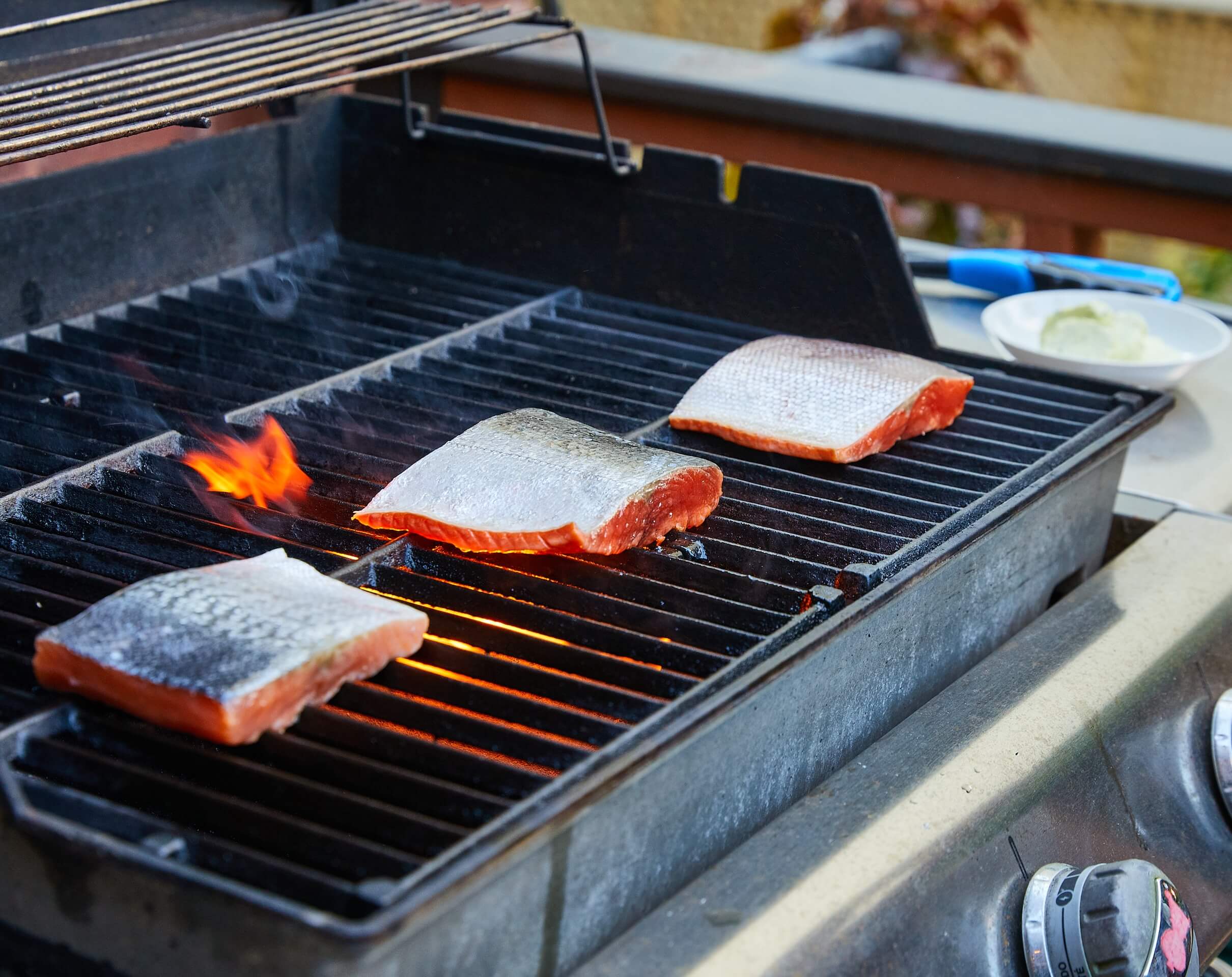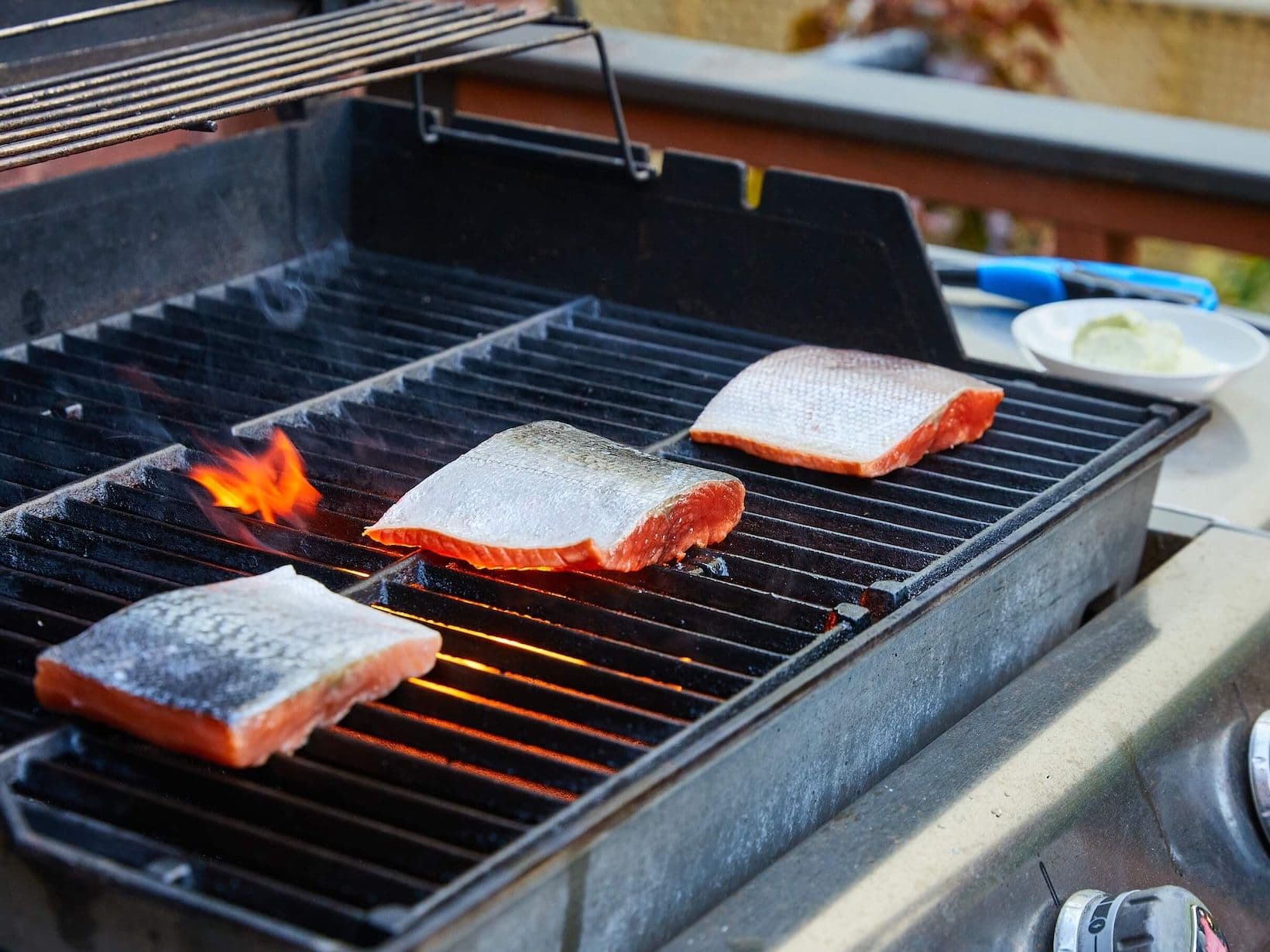Grace at the Grill
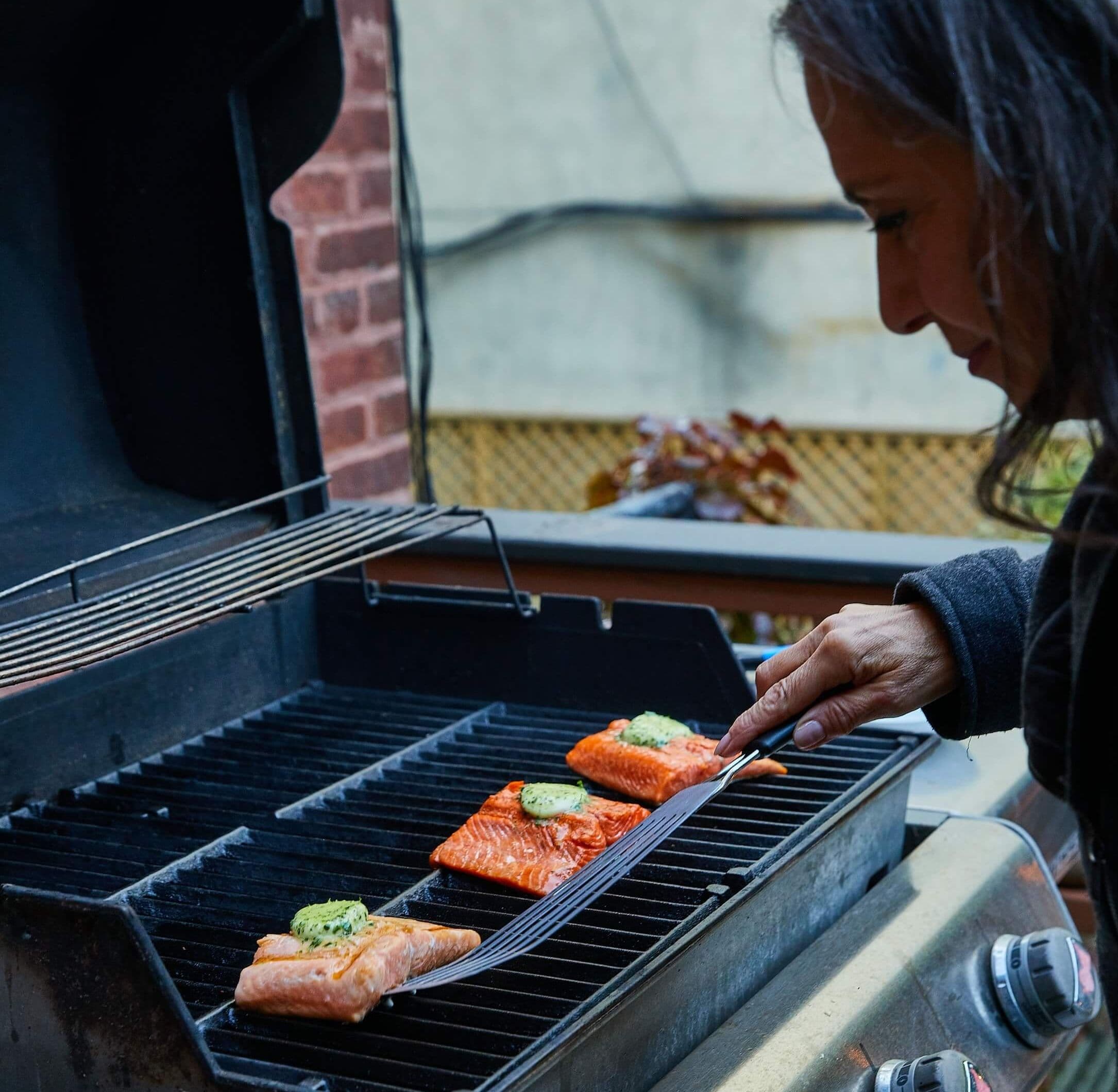
Some of us have been tossing fish on the grill for years with great results. For others, it’s unfamiliar territory — and it can feel a little intimidating.
If you’re in that second camp, don’t worry. Grilling fish doesn’t have to be tricky. I’ll share a few tips to help take the stress out of it and make your next cookout a whole lot easier (and tastier). But first, a little pre-game.
Just like our fishermen who spend countless hours readying their boats for the upcoming fishing season, we home cooks have our own checklist to prep for the grilling season.
Mine starts with an honest assessment of my gas grill — equal parts mortification that I waited so long to clean it, and relief that nobody else has seen it. I check the gas hose and igniter cords for holes and frayed wires — chewed through by squirrels more often than you’d think — the “flavor” bars and grill grates for rust, and the burner tubes for spiders’ nests.
Once the assessment is done and any replacement parts are purchased, I can begin the arduous task of deep cleaning. I lay out a large plastic tarp on the deck that becomes the staging area for cleaning supplies and all of the disassembled parts and components. Those then go into a shallow concrete mixing tub for scrubbing. What follows is a lot of elbow grease and perseverance. What emerges is a mostly pristine grill ready to fire up and the promise that I won’t go that long between cleanings. Yeah, sure!
Cleaned and ready to go, we start grilling. Actually, a clean grill is the first step to successful and non-stick grilling. Those pesky burnt on bits are like magnets to fish proteins, causing coagulation and sticking. And don’t forget to clean the inside of the grill itself, not just the grates. Any residual grease or food bits on the bottom or sides can cause unwanted flare ups.
Preheat, Scrape, Oil
Your grates are clean — great! Now it’s time to get them sizzling hot. Rub the grates with oil, then preheat the grill over high heat for about 10 minutes with the lid closed. With a clean paper towel, carefully wipe the grates and then rub again with fresh oil. Canola, grapeseed, and avocado oils have a high smoke point and won’t burn.
Fish Fundamentals
Make sure whatever fish you are using is dry when it hits the grill. This means patting off any excess moisture like water, a wet marinade, or brine. Moisture can adhere to the grates, making it a bit more difficult to flip the fish. In fact, letting the fish air-dry for a little while before hitting the grill, then rubbing the fillet with oil will better allow the fish to release from the grates without sticking. Pro tip: thawing the fish overnight between paper towels removes excess water from the ice.
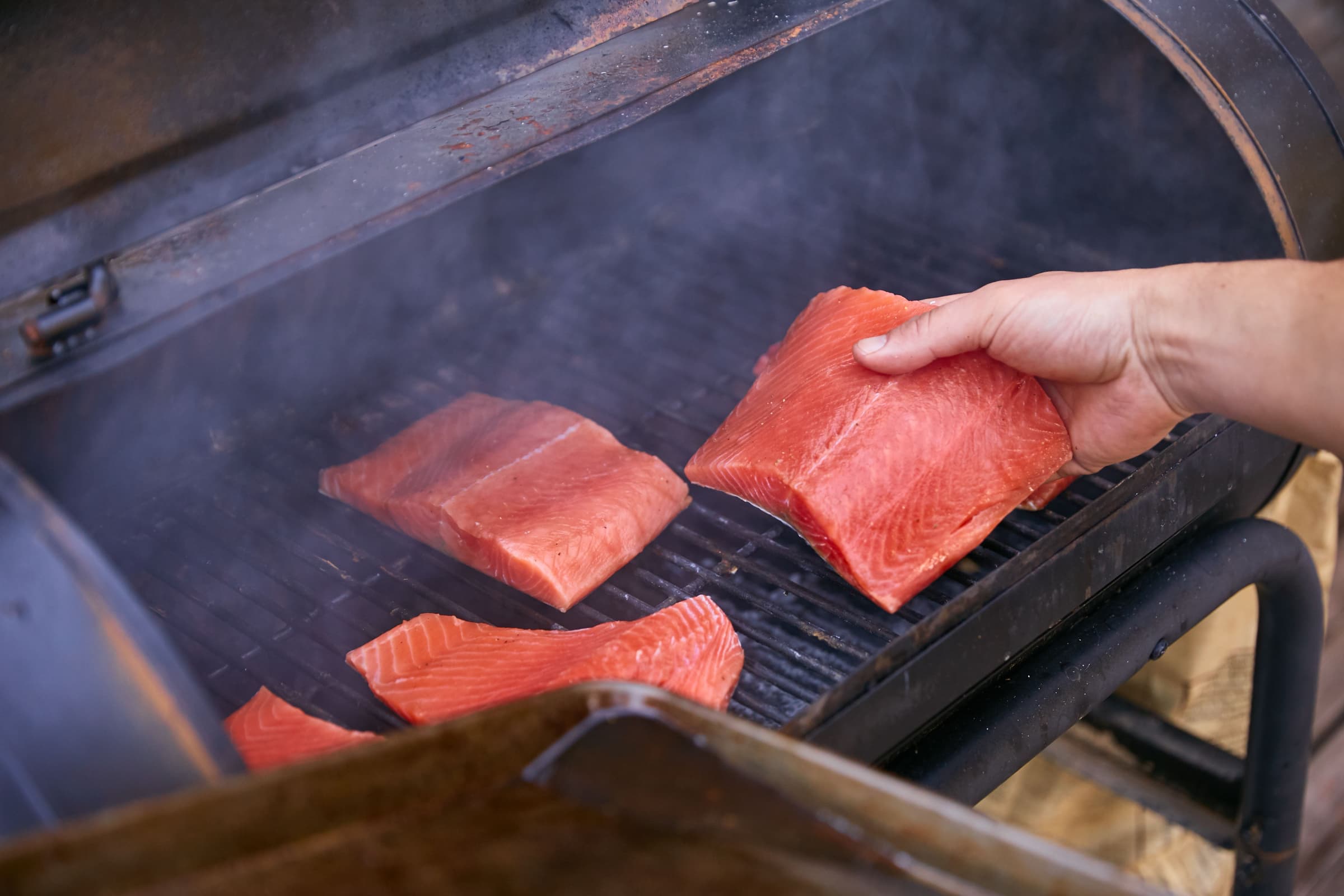
Add, Flip, Finish
Preheated and oiled, now we’re finally ready to get cooking. Rub the fish all over with oil and season it as desired. If you like crispy skin salmon or sablefish, add it to the grill, skin-side down and cook it without moving until the skin is golden brown. If the fish is dry and the grates are oiled, the fish will release from the grill once it’s browned enough. Don’t move the fillet prematurely or the skin may stick. Be patient! Use tongs to gently lift one corner to check for readiness, then carefully slide a spatula underneath the fillet. Lightly oil the top of the fillet before flipping, then cook until the fish is done to your liking. Depending on the strength of your grill and the size of the flames, you may need to lower the temperature to avoid the skin from burning.
Timing varies by thickness of the fillet. For thinner fillets like sockeye or pieces cut closer to the tail, cook it mostly on the skin side, then flip and cook for a minute or less to avoid overcooking. For thicker pieces, you can cook equally on both sides. If you’re using a glaze — especially one with sugar, brush the fish after it’s almost cooked and has released from the grill. At this point, you can flip the fish to glaze both sides and turn once or twice more. Just be careful not to overhandle the fish or you’ll increase the chances of breaking apart.
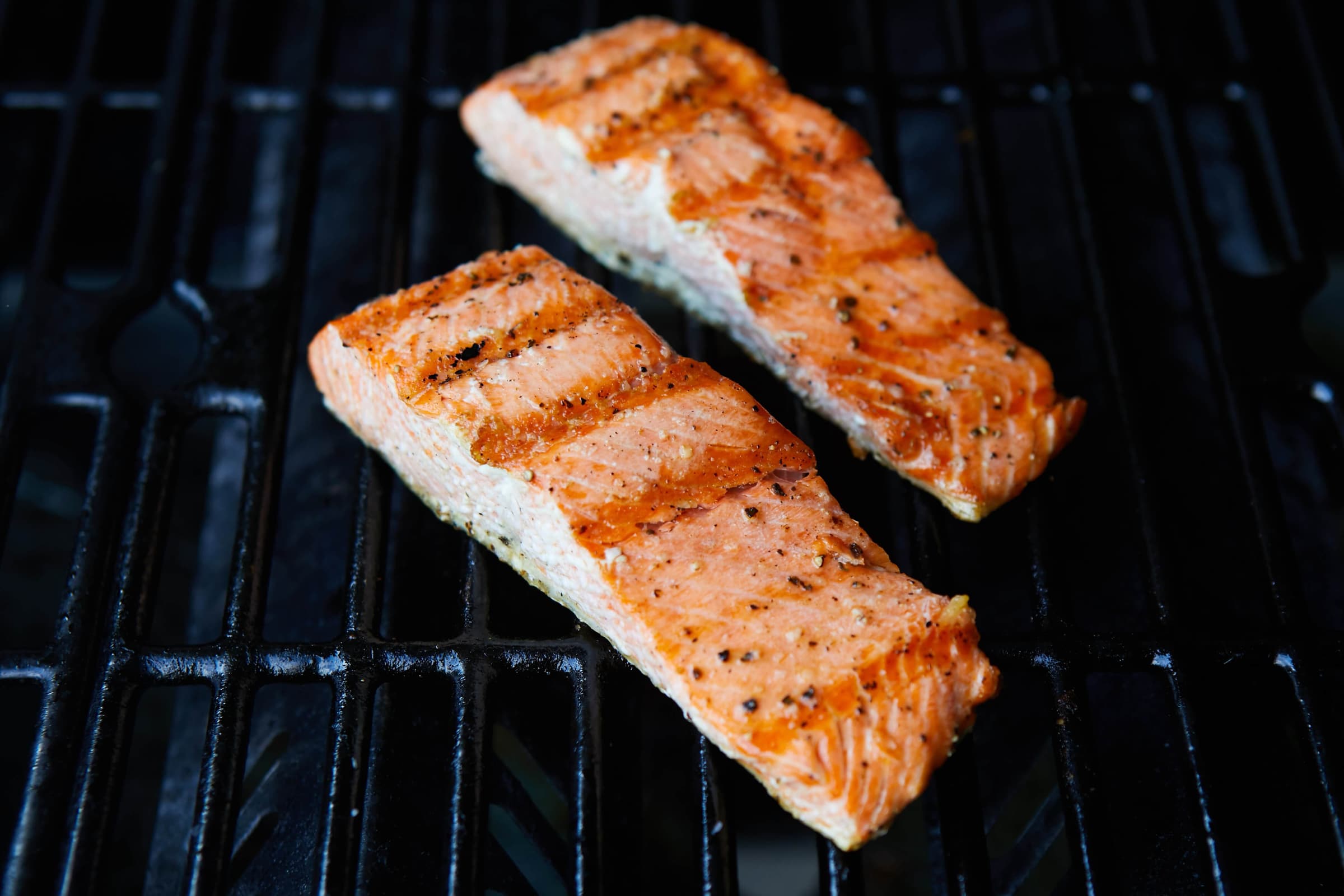
Grilling fish doesn’t have to be perfect — it just has to be done right. With a clean, hot grill, a little oil, and a bit of patience, you’re already most of the way there. Keep it simple, stay present, and don’t overthink it. Like anything, the more you do it, the easier it gets. And when the fillet comes off the grill, crisped just enough and still tender inside, it’s a quiet kind of win — the kind that builds a little more confidence for next time.
Happy grilling!
Check our cooking guide for timing and specifics.

